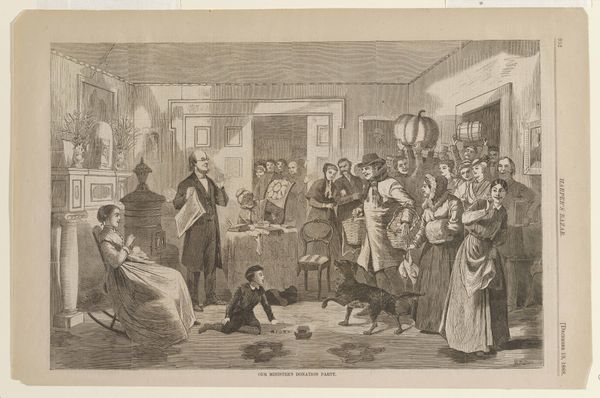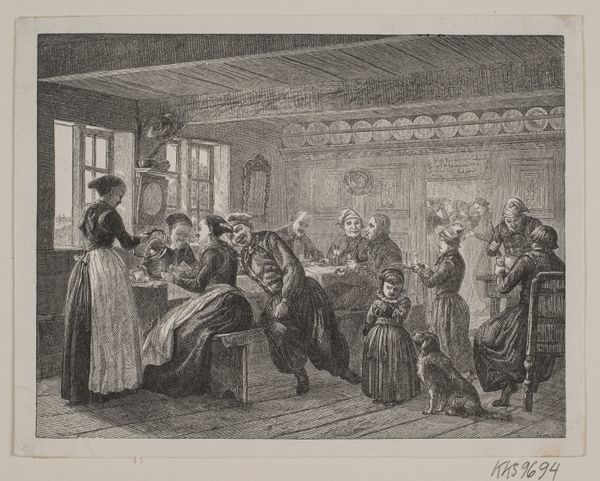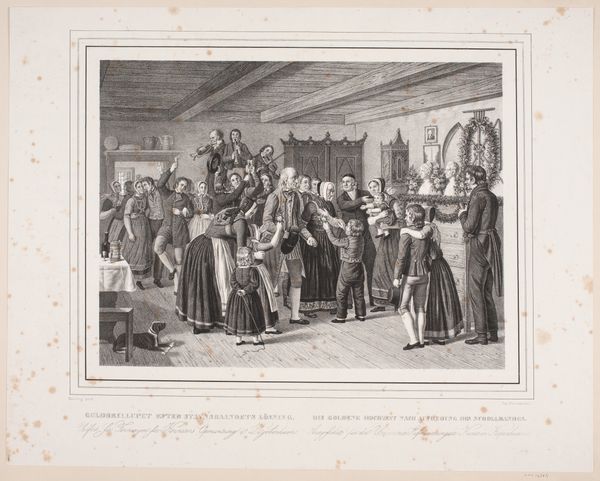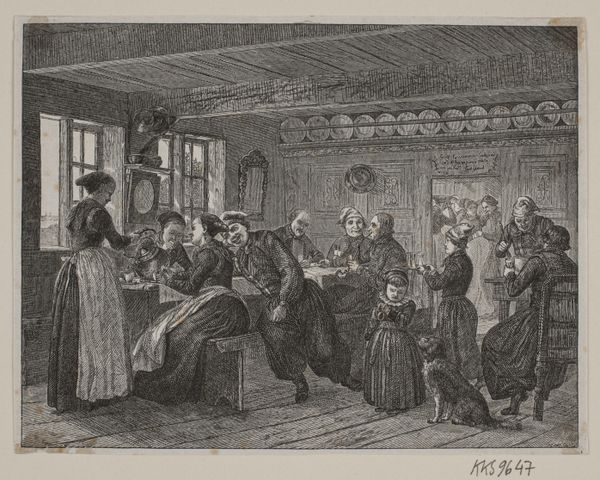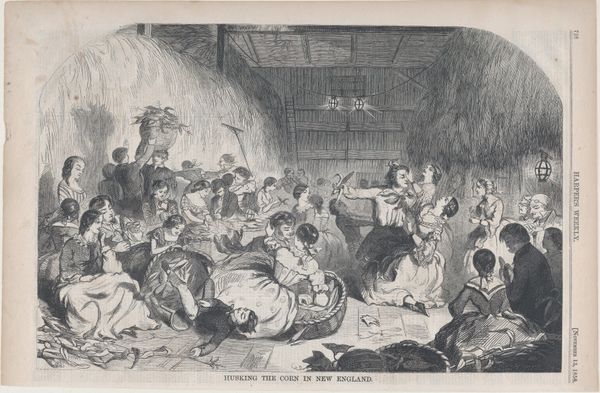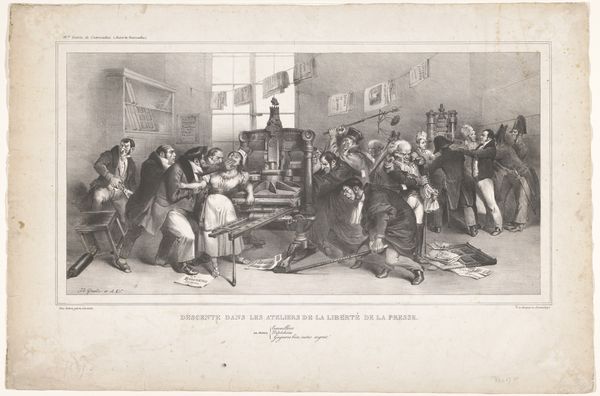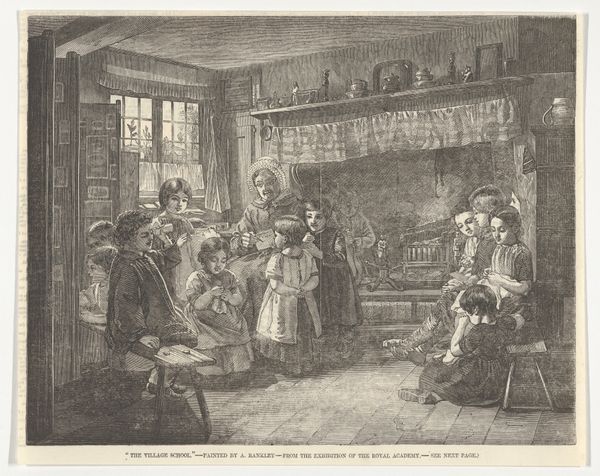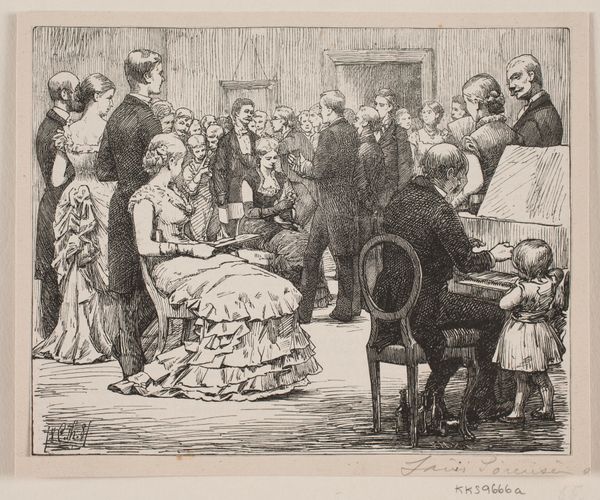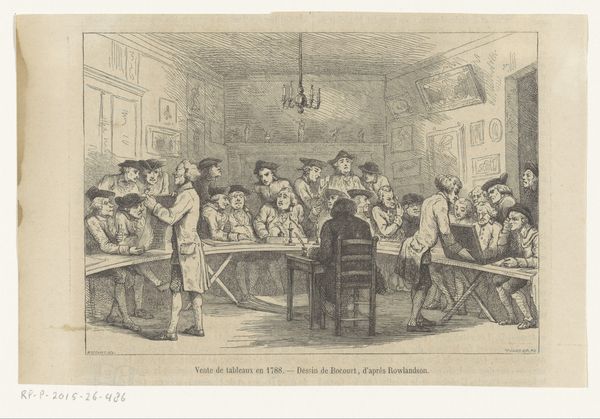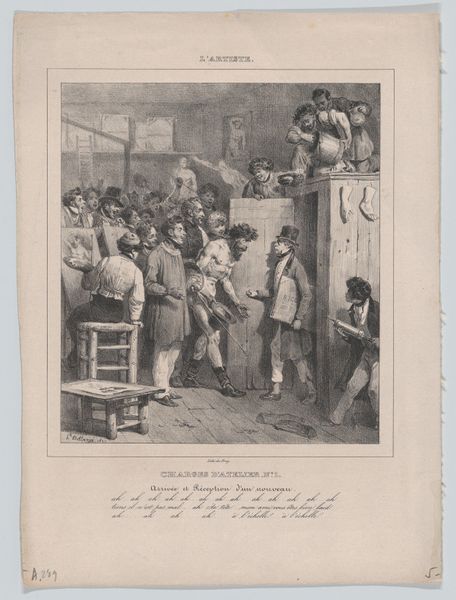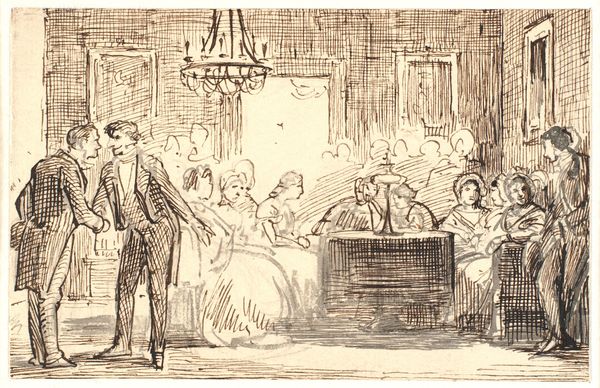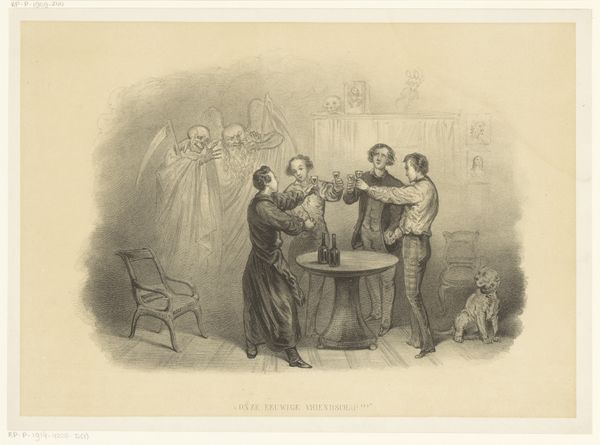
Our Minister's Donation Party (from "Harper's Bazar," Vol. I) 1868
0:00
0:00
drawing, print, ink
#
drawing
#
narrative-art
# print
#
dog
#
boy
#
ink
#
men
#
genre-painting
#
history-painting
#
realism
Dimensions: image: 9 1/4 x 13 3/4 in. (23.5 x 34.9 cm) sheet: 11 x 16 in. (27.9 x 40.7 cm)
Copyright: Public Domain
Curator: Winslow Homer's ink drawing, "Our Minister's Donation Party" from 1868, feels immediately like a slice of small-town life, doesn't it? It’s all hustle and bustle. Editor: Absolutely! I find the composition striking – all that chaos funneled into this one domestic space. There’s something quite touching about the attempt to bring community and piety together. It's like everyone's bringing forth something symbolic of the harvest, and also their connection to their faith leader. Curator: True. Homer captures that peculiar blend of the sacred and profane. These donation parties were quite common – essentially, the community pitching in to support the minister. What objects do you notice bearing specific symbolism or cultural relevance? Editor: Well, on one level, we see tangible support: sacks of flour, a giant pumpkin held aloft almost triumphantly. But there’s an undertone of obligation here too, don’t you think? Notice the minister in his somewhat severe dark suit and those ledgers, seemingly keeping a precise accounting of what everyone has contributed. He almost has this nervous affect, while his wife looks rather forlorn to his side, like her contributions have run dry. Curator: Ah, yes. Almost as though he's balancing the books not just financially, but morally. I see this space too as a nexus point in the cultural identity of these post-Civil War, almost pre-industrial hamlets: a visual record of their way of life, their beliefs. A sort of performative neighborliness. Do you get a sense of truth, or does it feel sentimentalised? Editor: I'd say he captures truth with a hint of gentle satire. Note that stray dog, a symbol of unpredictable energies, disrupting the ordered rows and gifts. That boy in the center is trying to collect what I presume are spilled coins--or spilled drink, who knows, adding a needed touch of grounded truth. Curator: I’m seeing a lot of quiet messages and small visual treats in the expressions of the attendees: some with their backs to the crowd as though resigned or gossiping, while the face of a gentleman directly facing us smiles so cheekily as he delivers something, some with children looking a bit confused or put out. So layered and complex... This single drawing offers us so many directions in which to read and wander! Editor: Yes, from a glimpse of ordinary 19th-century social life, to reflections on generosity, responsibility, and the ties that bind a community together. The image still has that evocative quality, where even the inking method somehow evokes the era so powerfully!
Comments
No comments
Be the first to comment and join the conversation on the ultimate creative platform.
